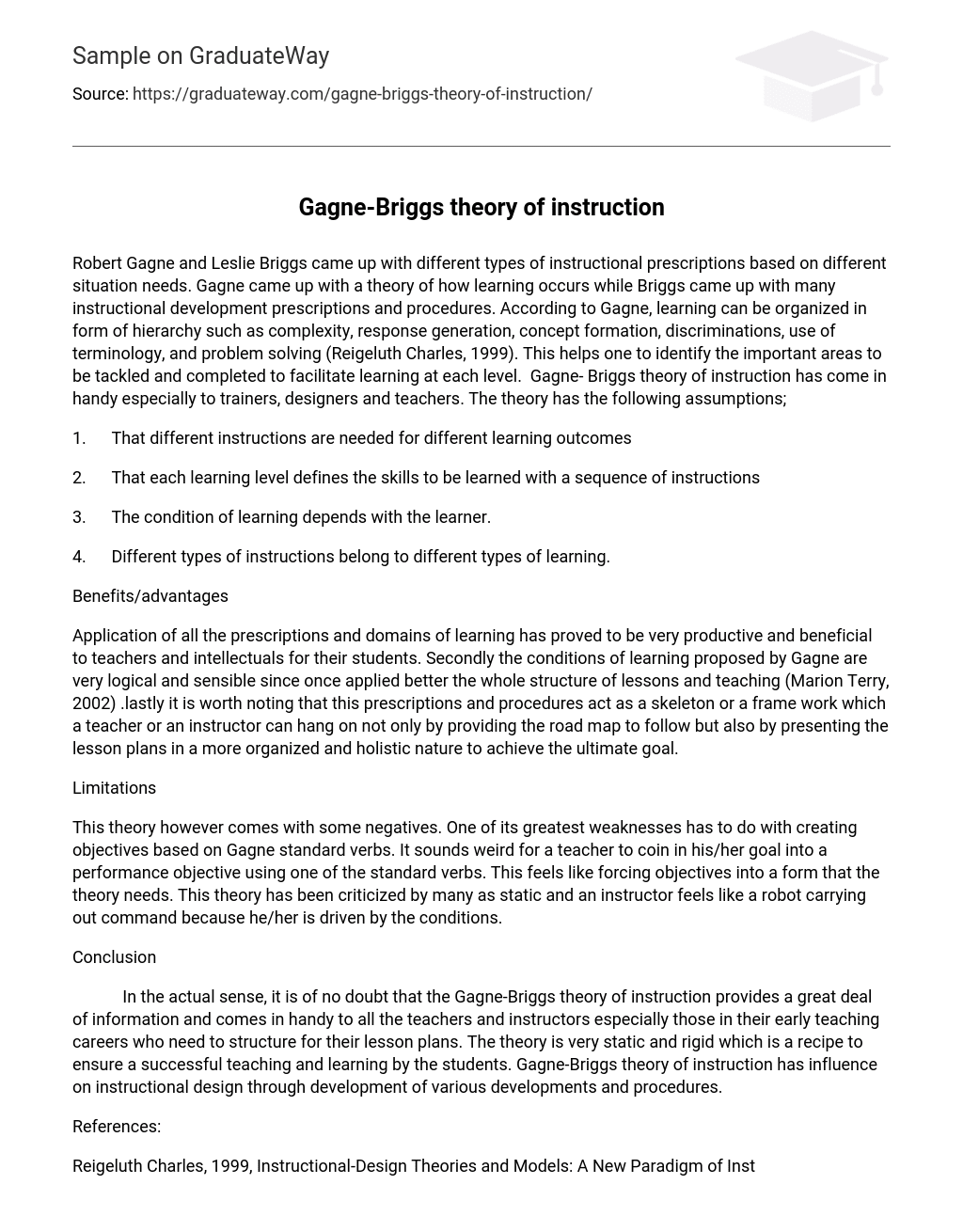Robert Gagne and Leslie Briggs came up with different types of instructional prescriptions based on different situation needs. Gagne came up with a theory of how learning occurs while Briggs came up with many instructional development prescriptions and procedures. According to Gagne, learning can be organized in form of hierarchy such as complexity, response generation, concept formation, discriminations, use of terminology, and problem solving (Reigeluth Charles, 1999). This helps one to identify the important areas to be tackled and completed to facilitate learning at each level. Gagne- Briggs theory of instruction has come in handy especially to trainers, designers and teachers. The theory has the following assumptions;
1. That different instructions are needed for different learning outcomes
2. That each learning level defines the skills to be learned with a sequence of instructions
3. The condition of learning depends with the learner.
4. Different types of instructions belong to different types of learning.
Benefits/advantages
Application of all the prescriptions and domains of learning has proved to be very productive and beneficial to teachers and intellectuals for their students. Secondly the conditions of learning proposed by Gagne are very logical and sensible since once applied better the whole structure of lessons and teaching (Marion Terry, 2002) .lastly it is worth noting that this prescriptions and procedures act as a skeleton or a frame work which a teacher or an instructor can hang on not only by providing the road map to follow but also by presenting the lesson plans in a more organized and holistic nature to achieve the ultimate goal.
Limitations
This theory however comes with some negatives. One of its greatest weaknesses has to do with creating objectives based on Gagne standard verbs. It sounds weird for a teacher to coin in his/her goal into a performance objective using one of the standard verbs. This feels like forcing objectives into a form that the theory needs. This theory has been criticized by many as static and an instructor feels like a robot carrying out command because he/her is driven by the conditions.
Conclusion
In the actual sense, it is of no doubt that the Gagne-Briggs theory of instruction provides a great deal of information and comes in handy to all the teachers and instructors especially those in their early teaching careers who need to structure for their lesson plans. The theory is very static and rigid which is a recipe to ensure a successful teaching and learning by the students. Gagne-Briggs theory of instruction has influence on instructional design through development of various developments and procedures.
References:
Reigeluth Charles, 1999, Instructional-Design Theories and Models: A New Paradigm of Instructional Theory-Vol.2, Lawrence Erlbaum Associates.
Marion Terry, 2002, Translating Learning Style Theory into Developmental Education Practice: An Article Based on Gregorc’s Cognitive Learning Styles, Journal of College Reading and Learning.





